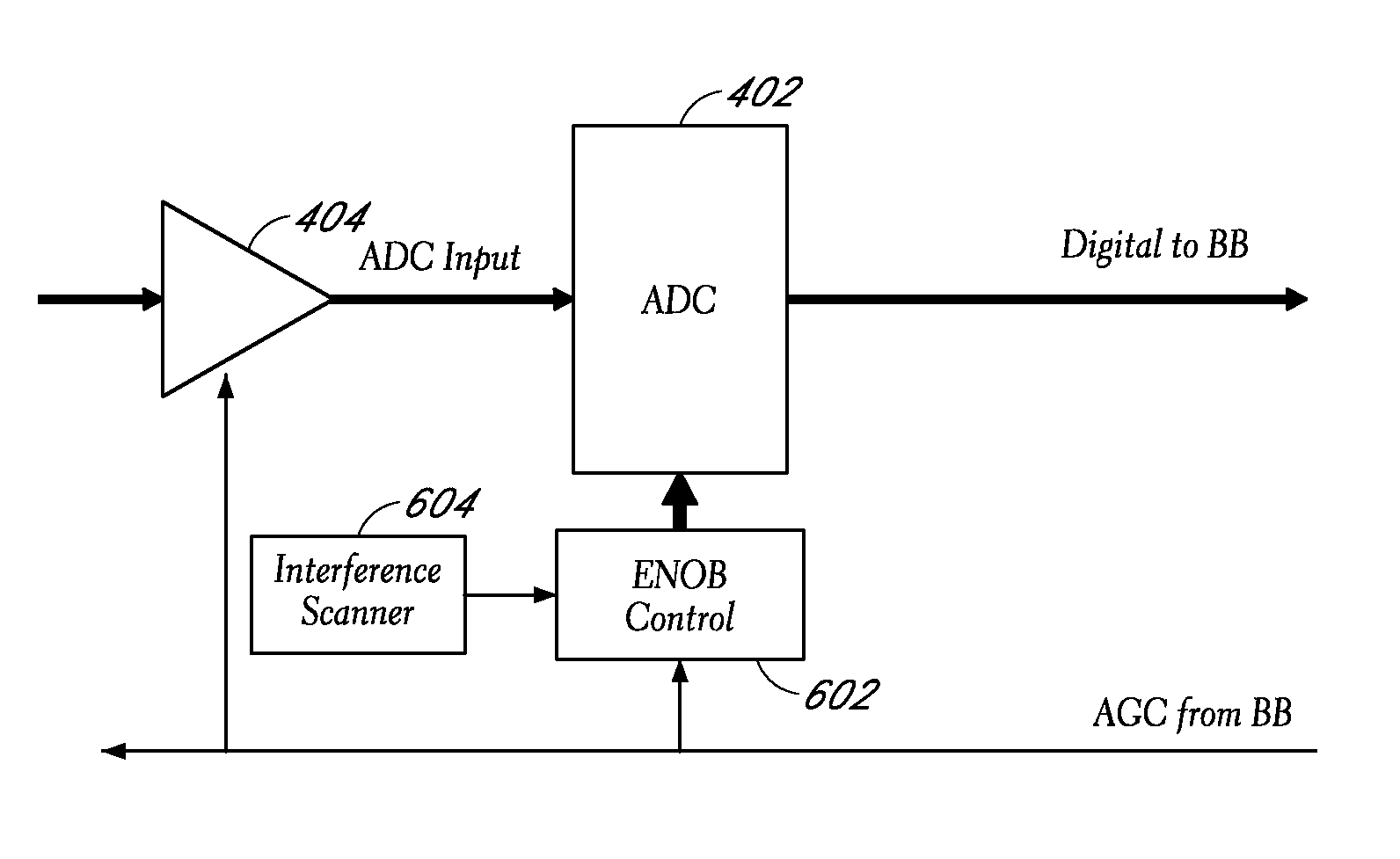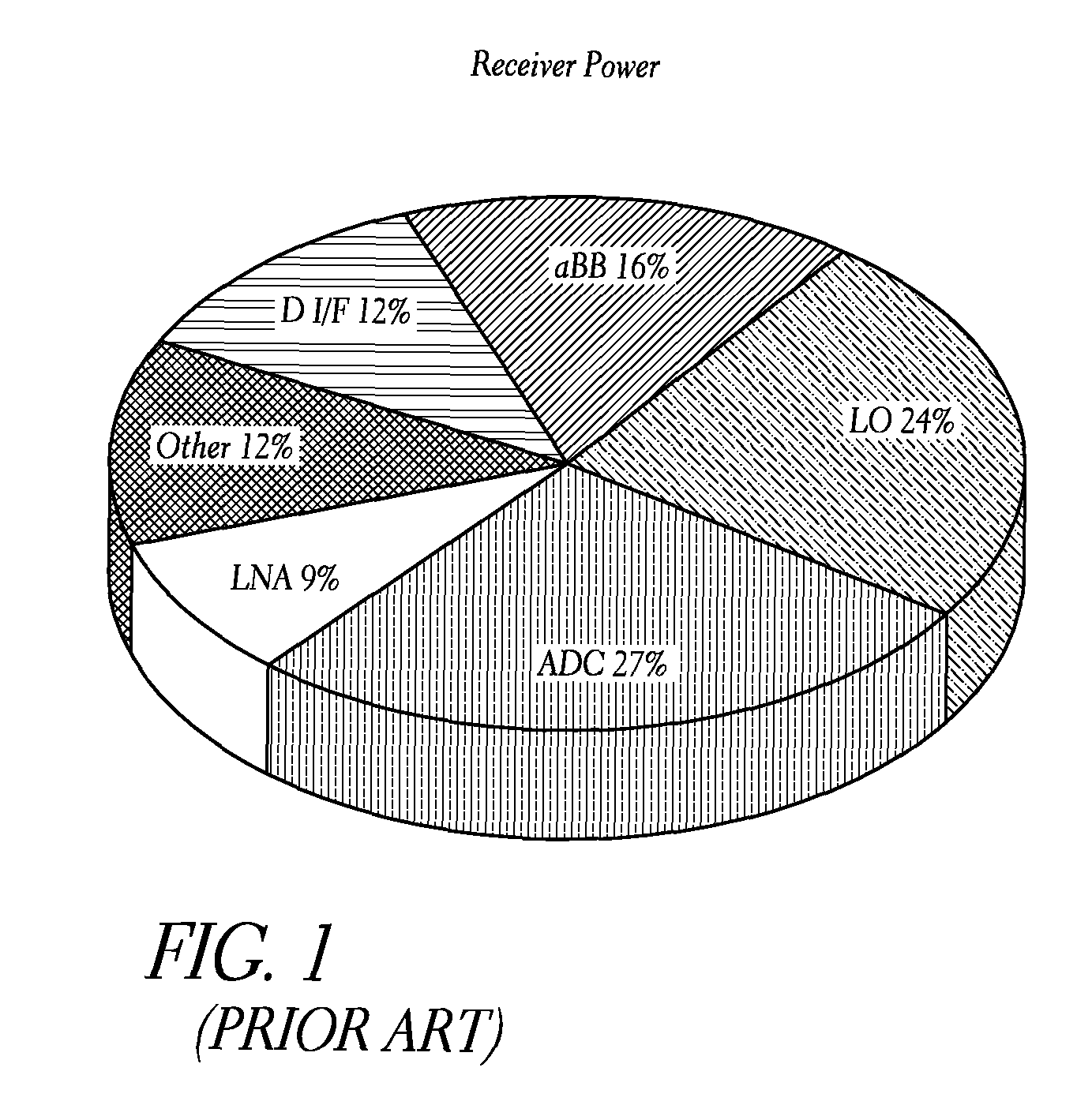Power optimized ADC for wireless transceivers
a technology of wireless transceivers and power optimization, applied in the field of electronic devices, can solve the problems of large power consumption of analog-to-digital converters (adc) of radio receivers which can be part of transceivers, and achieve the effects of reducing power consumption, reducing power consumption of adc, and consuming a relatively large amount of power
- Summary
- Abstract
- Description
- Claims
- Application Information
AI Technical Summary
Benefits of technology
Problems solved by technology
Method used
Image
Examples
Embodiment Construction
[0029]Although particular embodiments are described herein, other embodiments of the invention, including embodiments that do not provide all of the benefits and features set forth herein, will be apparent to those of ordinary skill in the art.
[0030]In the example illustrated in FIG. 1, an analog-to-digital converter (ADC) consumes more power than any other block in the receiver. One possibility is to take advantage of the Power-ENOB relationship shown below in FIG. 2.
[0031]FIG. 2 illustrates an example of a relationship between power used by an analog-to-digital converter (ADC) and an effective number of bits (ENOB). As illustrated by FIG. 2, if there are states of the receiver that use a lower ENOB than the maximum available, then we can reduce the power used by the ADC for those states. One embodiment includes detection of those states for which power can be saved.
[0032]A minimum value for the effective number of bits (ENOB) can be calculated as follows.
PUM
 Login to View More
Login to View More Abstract
Description
Claims
Application Information
 Login to View More
Login to View More - R&D
- Intellectual Property
- Life Sciences
- Materials
- Tech Scout
- Unparalleled Data Quality
- Higher Quality Content
- 60% Fewer Hallucinations
Browse by: Latest US Patents, China's latest patents, Technical Efficacy Thesaurus, Application Domain, Technology Topic, Popular Technical Reports.
© 2025 PatSnap. All rights reserved.Legal|Privacy policy|Modern Slavery Act Transparency Statement|Sitemap|About US| Contact US: help@patsnap.com



